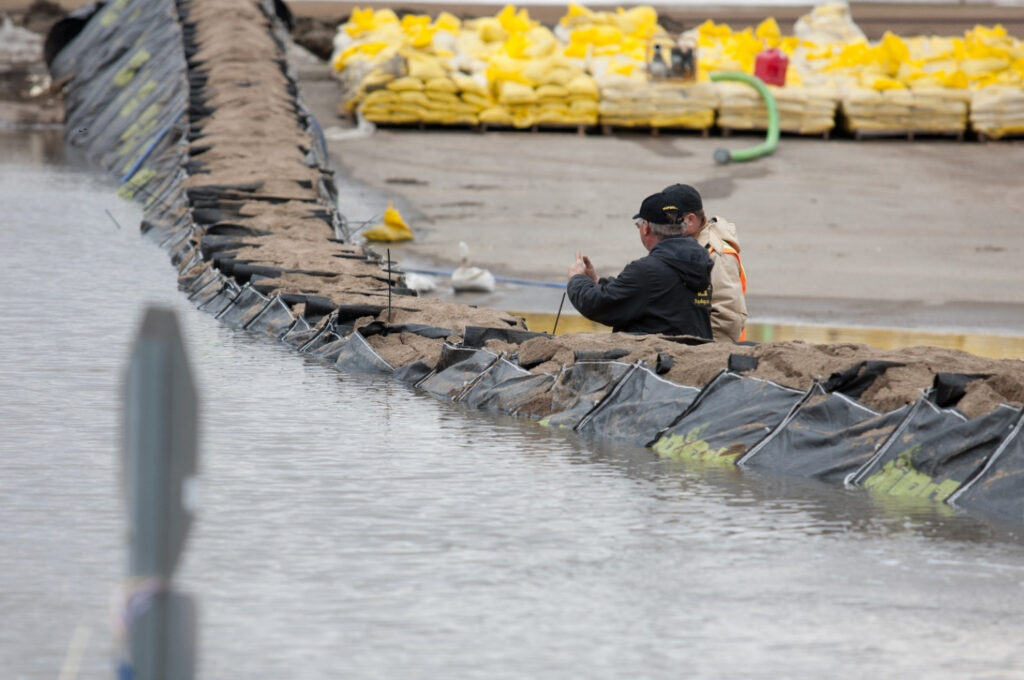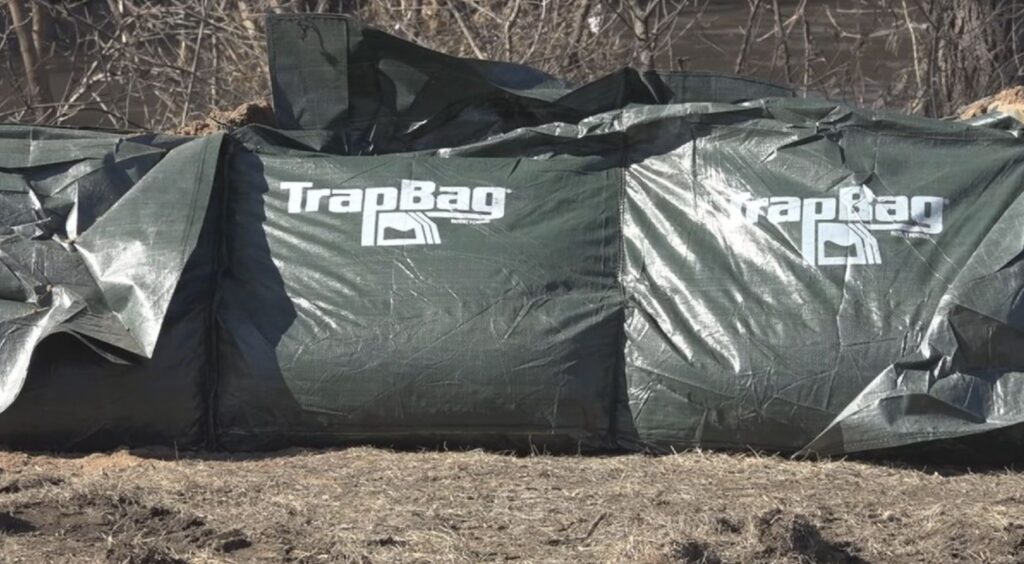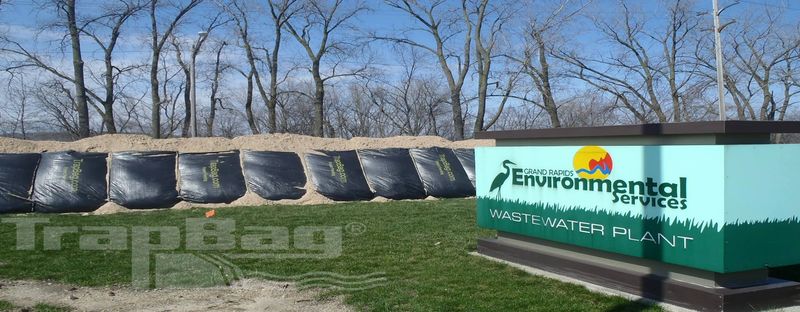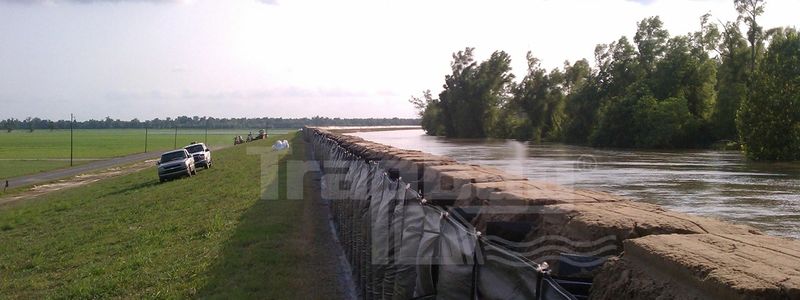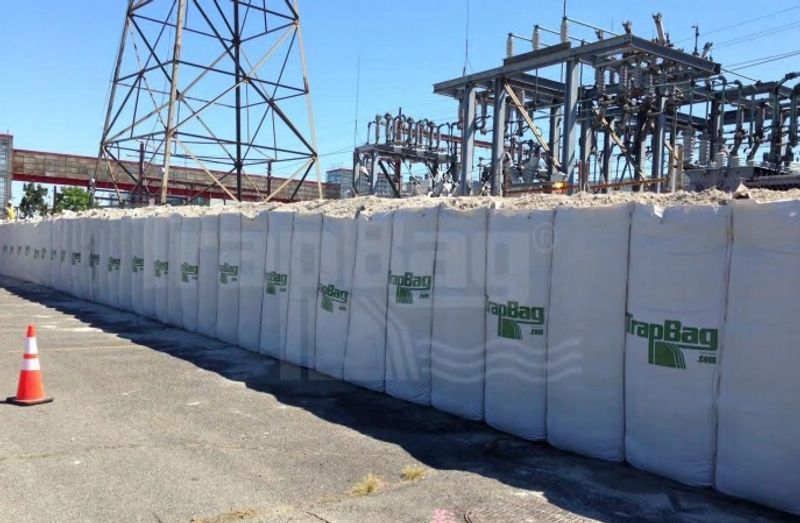TrapBag® for Temporary Cofferdams
TrapBag® cofferdam barriers are designed to create a stable, watertight enclosure that allows for dry work environments in rivers, lakes, and coastal areas. Cofferdams and other underwater structures require a different approach to keeping out water, so we changed our design just for these applications as part of our continuing efforts toward customization.
Unlike our standard TrapBags®, our cofferdam bags are individual bags with an anchor point at the bottom rather than a chain of cells. They’re completely rectangular and don’t have slopes like their original counterparts. Each unit has rigid Coroplast panels to help the bag maintain its shape and prevent bulging. This way, they can be placed directly against each other to form a watertight seal.
Why Use TrapBag®?
- They’re designed to withstand water pressure and harsh environmental conditions.
- Their installation requires less labor and time compared to traditional cofferdams.
- They require fewer materials and less heavy equipment to deploy.
- They’re suitable for many water control applications, including construction, infrastructure repair, and flood prevention.
- They minimize environmental impact without sacrificing effective water displacement.
How to Deploy TrapBag® Cofferdam Bags
You’ll need a spreader bar for your excavator or skid steer to lift these special bags into place. Then follow these simple steps to install your cofferdam bags.
-
Prepare: Assess the deployment area for optimal barrier placement.
-
Unpack: Open each unit to prepare them for filling.
-
Fill: Insert the forks on your forklift into the sleeves at the top of the bag to help hold the bag open. Fill with gravel. You may also want to add an HDPE liner to the water-facing side of your cofferdam to create a truly waterproof seal.
-
Place: Once the bags are filled and ready to set in place, connect the eight straps on the TrapBag® cofferdam bag to the eight-point spreader bar. Once connected, you can begin lifting and setting the TrapBag® cofferdam bags into position.
Who Our Cofferdam Bags Serve
TrapBag® temporary cofferdams are trusted by industries that need water control solutions, including:
Construction
TrapBag® cofferdams provide a quick and sturdy solution for diverting water and maintaining dry job sites so the work can continue without costly delays.
Learn More »Civil engineering
TrapBag® offers a highly adaptable option that simplifies complex engineering challenges associated with infrastructure projects such as bridge repairs, dam maintenance, and waterway modifications.
Learn More »Municipalities and governments
Cities and government agencies use TrapBag® for flood mitigation, waterway restoration, and emergency water management. The easy deployment and scalability make it an effective choice for large-scale and urgent projects.
Learn More »Projects
How TrapBag® Compares to:
These cofferdams are made with steel sheet piles that can hold back water and resist corrosion. They are ideal for sites in deeper water, such as construction projects in the middle of a large river or a harbor. They’re also well-suited for projects that require long periods of work under the water, such as bridge construction.
However, for projects taking place in shallower water, sheet pile cofferdams can be less practical. TrapBag® is ideal for these projects because it offers the same results with a far smaller price tag.
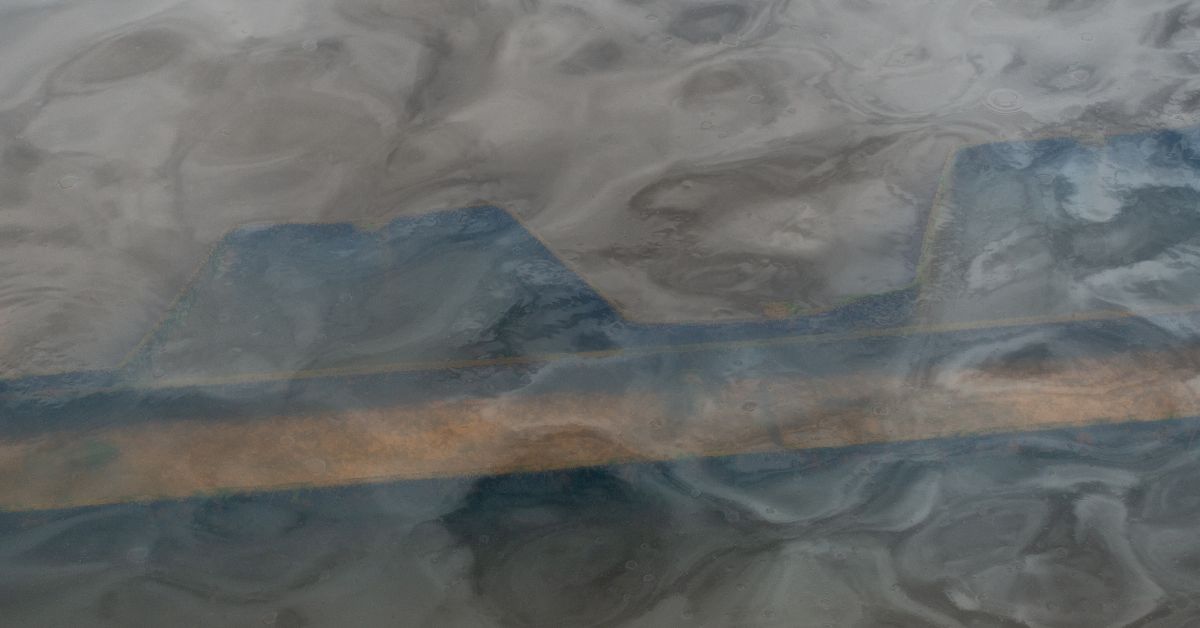
This style of cofferdam uses water to create a sealed cofferdam that minimizes the amount of water in your work site. They allow crews to work more effectively in an area that wouldn’t normally be accessible due to the amount of water.
However, water barriers aren’t ideal materials for these structures. They can puncture more easily and leak water all over the site—the exact problem you were trying to prevent in the first place.

Sandbags have been used for everything from flood control to erosion protection for thousands of years. They can also be used to construct cofferdams on some projects, particularly in shallow waters such as along rivers and in shallow ponds or lakes.
However, sandbags are infamous for their high margin of error. Your cofferdam could collapse and flood your work area if the structure is poorly constructed at any point. They are also more labor-intensive to fill and build.
In contrast, TrapBag® can be filled in under an hour and be used to make a cofferdam for your in-water projects. TrapBag® barriers are leak-resistant, making them the perfect alternative to sandbags.
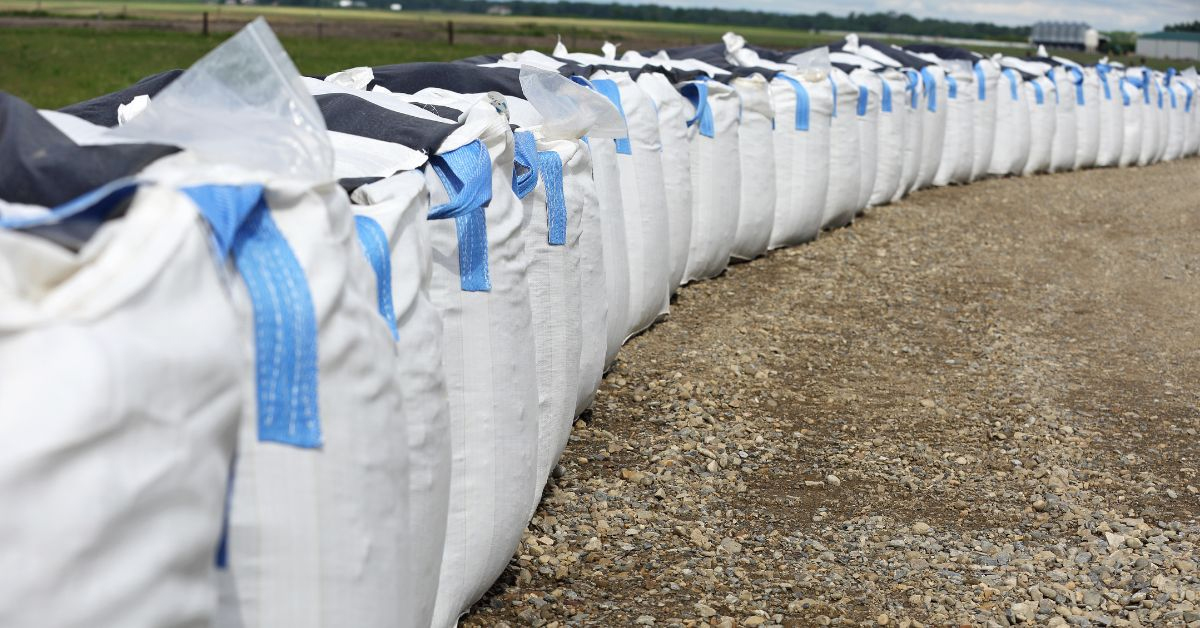
About the TrapBag® Team
TrapBag® is committed to developing innovative water and erosion control solutions. Our team of experts supports clients with personalized guidance to support the success of any project. With extensive experience in engineering and environmental resilience, we help industries and communities better protect their infrastructure and property.

